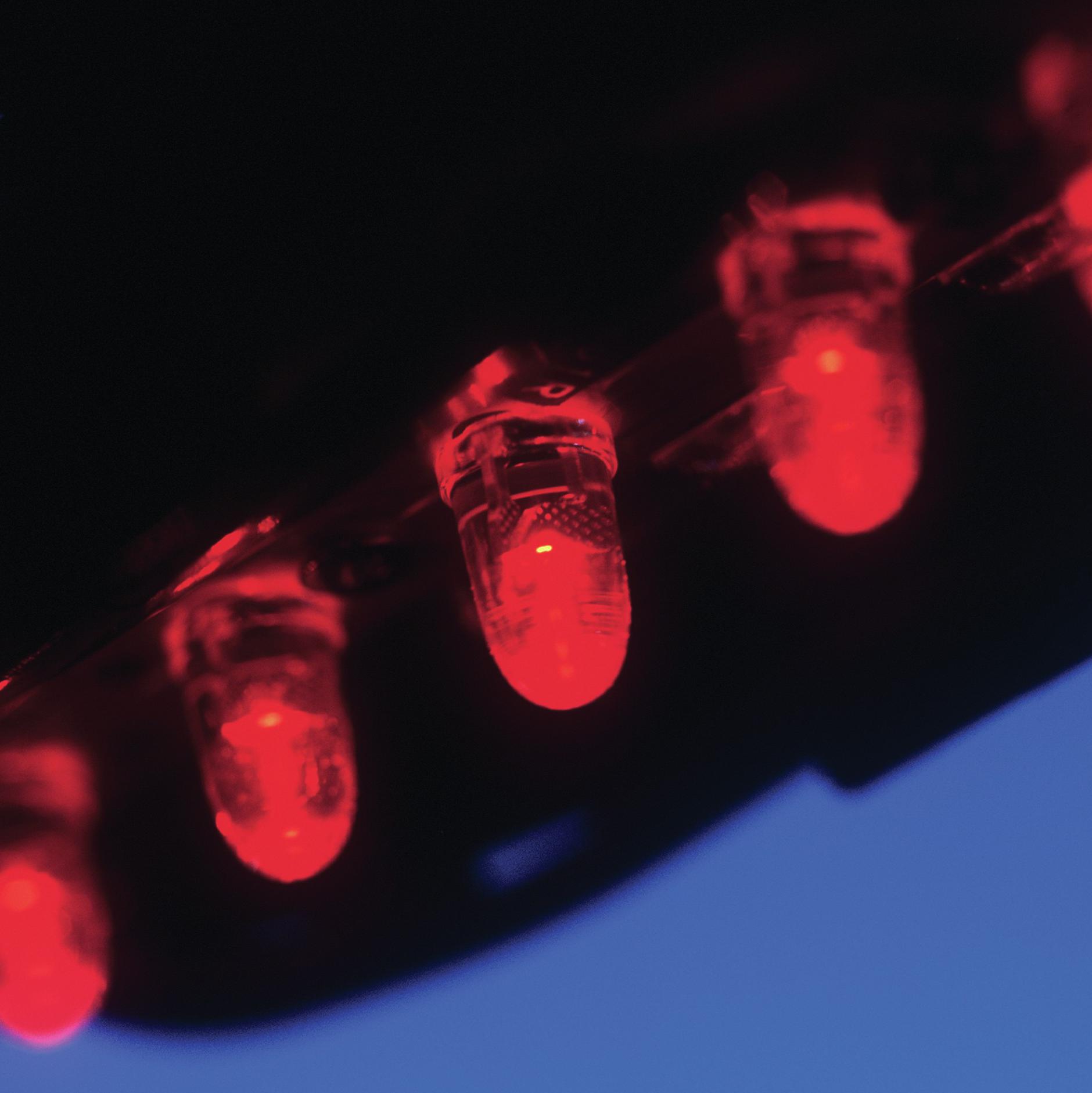
Little blue, red and green lights are all around us these days, whether they are indicating that our electronic gadgetry is on, or lighting up smart buildings. But did you know that the same light emitting diode (LED) technology could play a crucial role in tackling global warming by cutting the amount of electricity used in general lighting by at least a quarter? That is what scientists say replacing filament light bulbs, across the whole of the UK, with bulbs exploiting LEDs will achieve. The filament light bulb was developed by Thomas Edison over a century ago, and today still converts just 5% of the electricity it uses to light. The compact fluorescent lights that are familiar for their energy-saving potential are a significant improvement at around 15% efficiency. However, the best white LEDs are already 30% efficient, and are likely to reach beyond 50% as development continues. Researchers currently predict that moving to LEDs would eliminate carbon dioxide (CO2) emissions equivalent to the output of eight large power stations, a useful chunk of the 34% cut from 1990 emission levels that the country must reach by 2020 (see CHEMISTRY REVIEW, Vol. 14, No 1, pp. 8–10).
The reason that Edison’s incandescent bulbs use so much more energy than LEDs is because, like fire, their ability to produce light relies on them reaching very high temperatures. In contrast to the simplicity of the thin tungsten metal filament, which you can see in these incandescent bulbs, LEDs have a much more complex structure. Careful selection and arrangement of a variety of semiconductor compounds made from elements found in groups 13 and 15 of the periodic table (Figure 1) allows them to make light at room temperature, demanding less electricity.
Your organisation does not have access to this article.
Sign up today to give your students the edge they need to achieve their best grades with subject expertise
Subscribe




